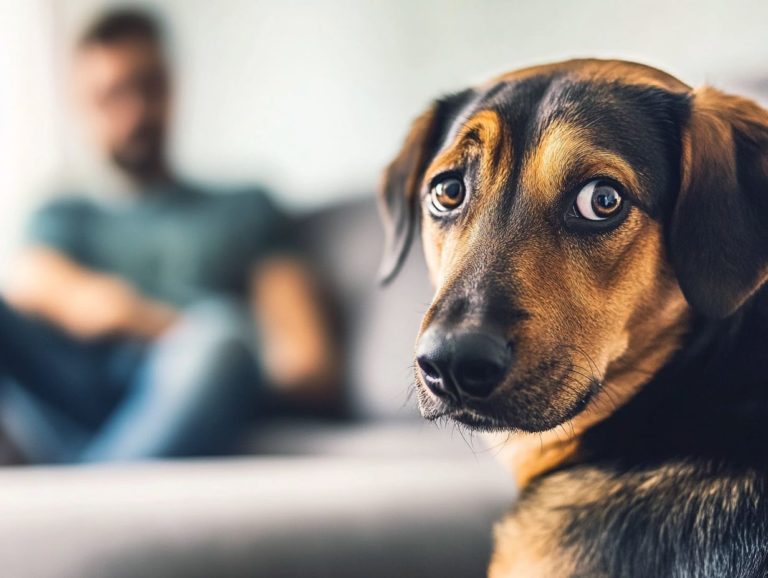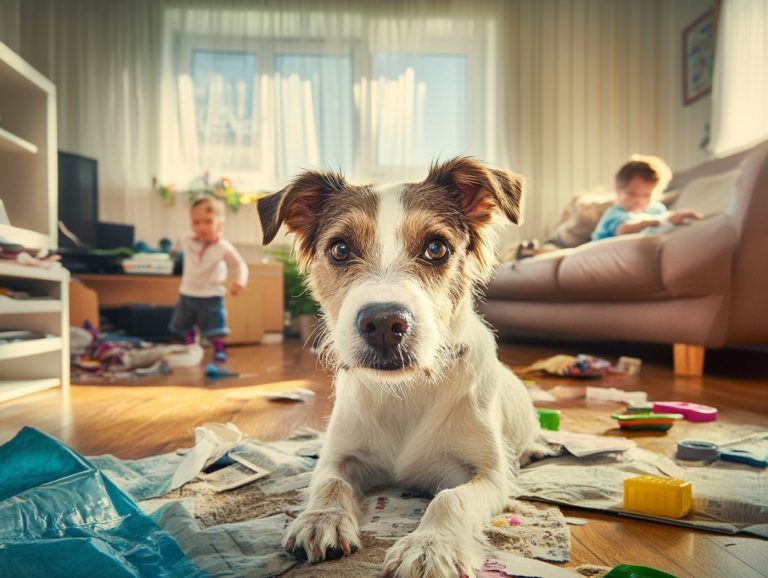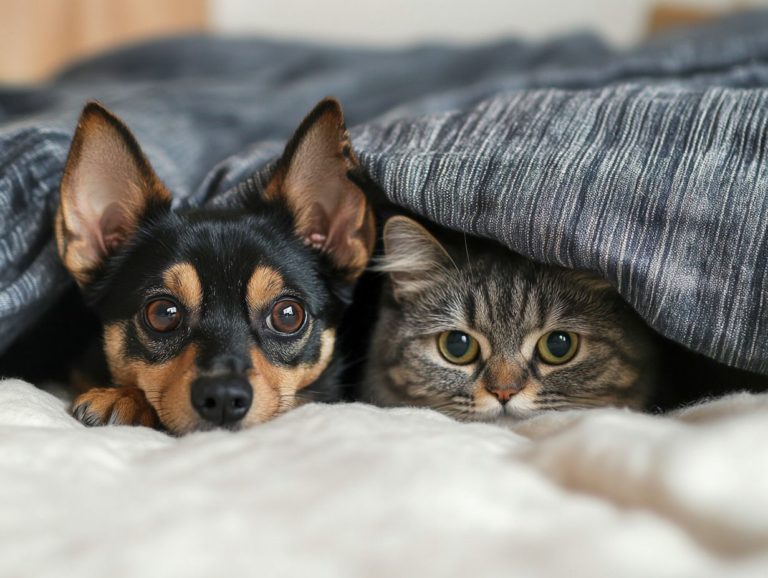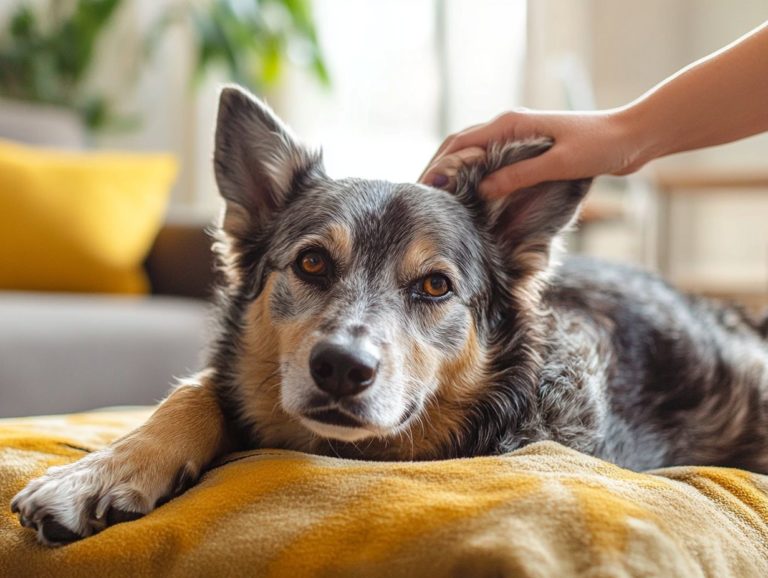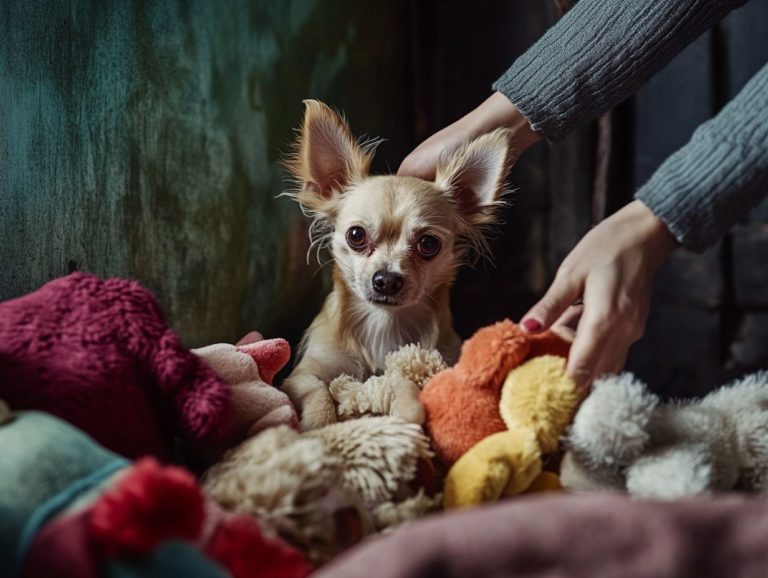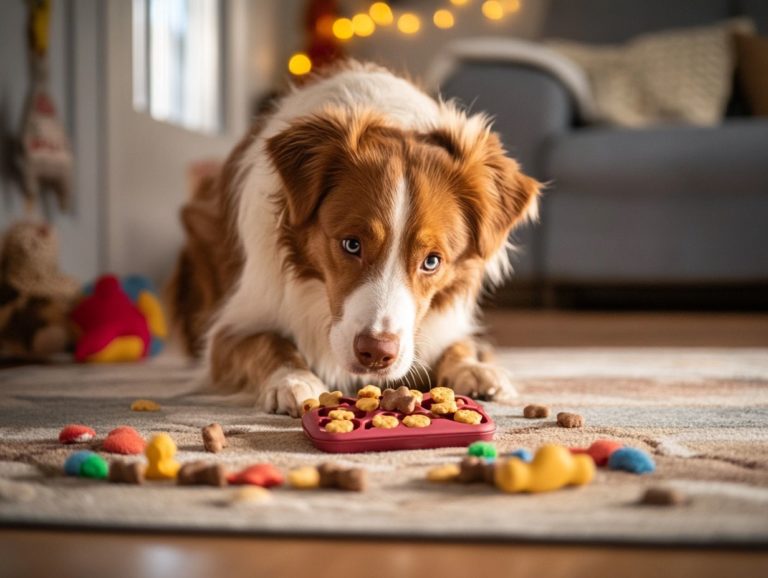How to Use Essential Oils for Anxious Pets
If you ve noticed your furry friend getting anxious during storms, fireworks, or even everyday events, you re not alone. Many pets experience stress, and essential oils can provide a natural, soothing remedy.
This article explores the benefits of essential oils for anxious pets, guiding you on which oils to choose for different types of anxiety and how to apply them safely.
You ll find important precautions to consider, tips for introducing these calming scents, and additional techniques to help your pet relax. Discover how to create a more peaceful environment for your beloved companion!
Contents
- Key Takeaways:
- The Benefits of Essential Oils for Anxious Pets
- Choosing the Right Essential Oils for Your Pet
- Methods of Using Essential Oils for Anxious Pets
- Precautions and Safety Measures
- Tips for Introducing Essential Oils to Your Pet
- Additional Techniques for Calming Anxious Pets
- Frequently Asked Questions
- How can I use essential oils for my anxious pet, including calming blends like lavender and cedarwood?
- Are there any essential oils, like Ylang Ylang and tea tree, that are harmful to pets?
- How do I know which essential oils to use for my pet’s anxiety, like calming effects from lavender and chamomile?
- Can I use essential oils on all types of pets?
- How often should I use essential oils on my anxious pet?
- Can essential oils replace medication for my pet’s anxiety?
Key Takeaways:
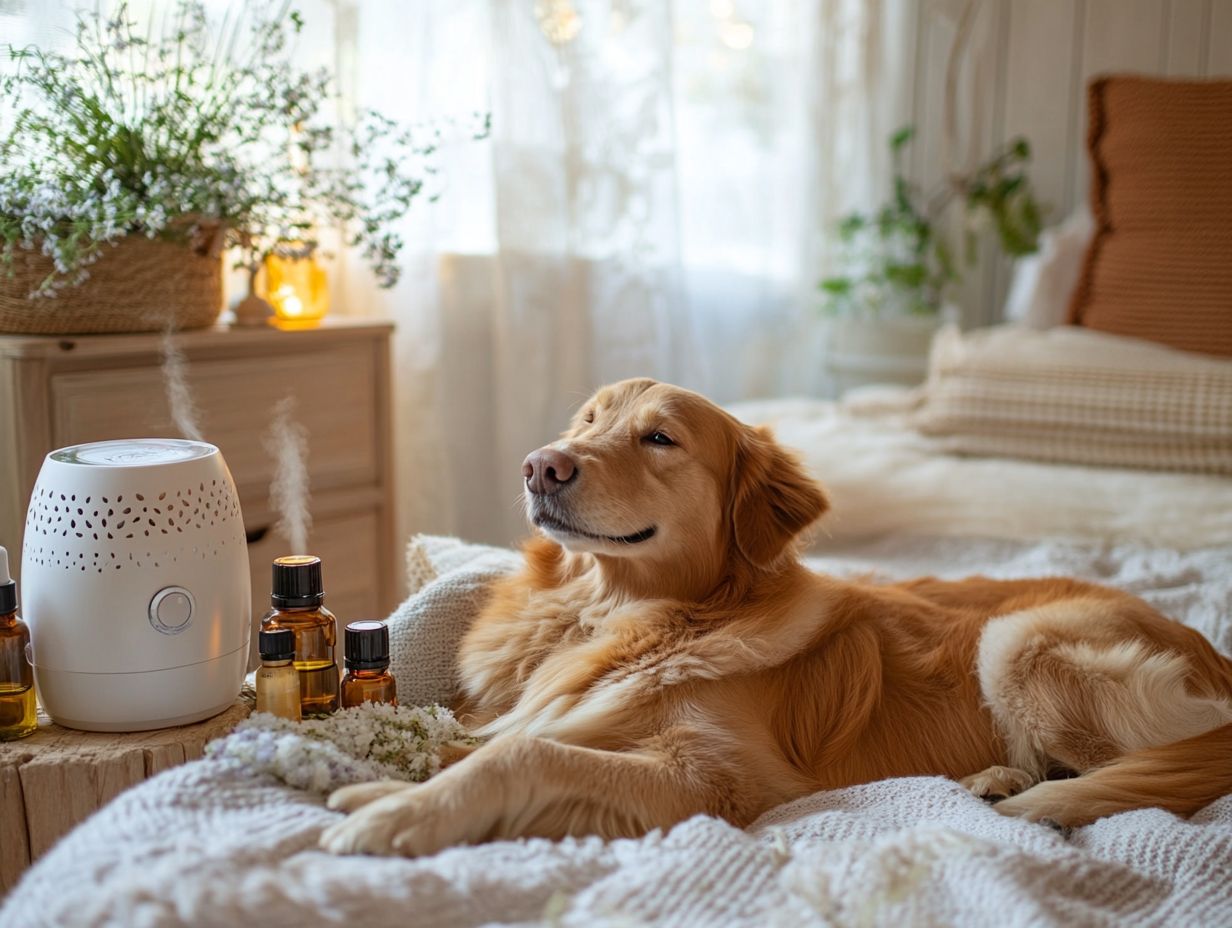
- Essential oils can help anxious pets, but it’s crucial to understand their effects and choose safe oils for your pet’s specific needs.
- The main methods of using essential oils for pets are inhalation, topical application, and diffusion. Always take precautions and introduce oils gradually.
- Combining essential oils with other relaxation techniques, like massage, can enhance their calming effects. Always observe your pet s reactions and consult with a veterinarian if necessary.
The Benefits of Essential Oils for Anxious Pets
Essential oils can greatly benefit anxious pets by creating a soothing atmosphere that promotes their emotional health and overall well-being. High-quality oils can help manage stress and anxiety, especially during loud events like New Year’s Eve or the 4th of July, when fireworks can frighten dogs. To better understand how to support your furry friends, consider learning about the needs of anxious pets. Oils like lavender and cedarwood can enhance this calming environment.
Using essential oils for pet care not only improves relaxation but also fosters comfort and tranquility, making it an effective solution for dog anxiety. For more insights, check out understanding play therapy for anxious pets.
Understanding the Effects of Essential Oils on Pets
Knowing how essential oils affect your pets can enhance their emotional well-being, particularly concerning anxiety. Essential oils engage your dog’s sense of smell, providing calming properties that soothe their nerves during stressful situations like thunderstorms or Halloween festivities.
For example, lavender is known for promoting relaxation, making it a great companion during trips or vet visits when your pet may feel uneasy. Cedarwood offers a grounding scent and helps repel insects perfect for your outdoor adventures. Chamomile is also an excellent choice, easing digestive discomfort while calming an anxious pet. Additionally, oils like orange and sandalwood provide soothing effects.
By incorporating these essential oils into your routines, you can create a more serene environment that supports your furry friend’s emotional and physical health.
Choosing the Right Essential Oils for Your Pet
Selecting the right essential oils for your pet requires an understanding of their unique needs and how different oils can help them. Choosing high-quality oils from reputable brands like Young Living ensures that your furry companion receives maximum benefits, especially in managing dog anxiety during stressful times, such as the busy holiday season and events like Halloween.
Safe and Effective Oils for Different Types of Anxiety
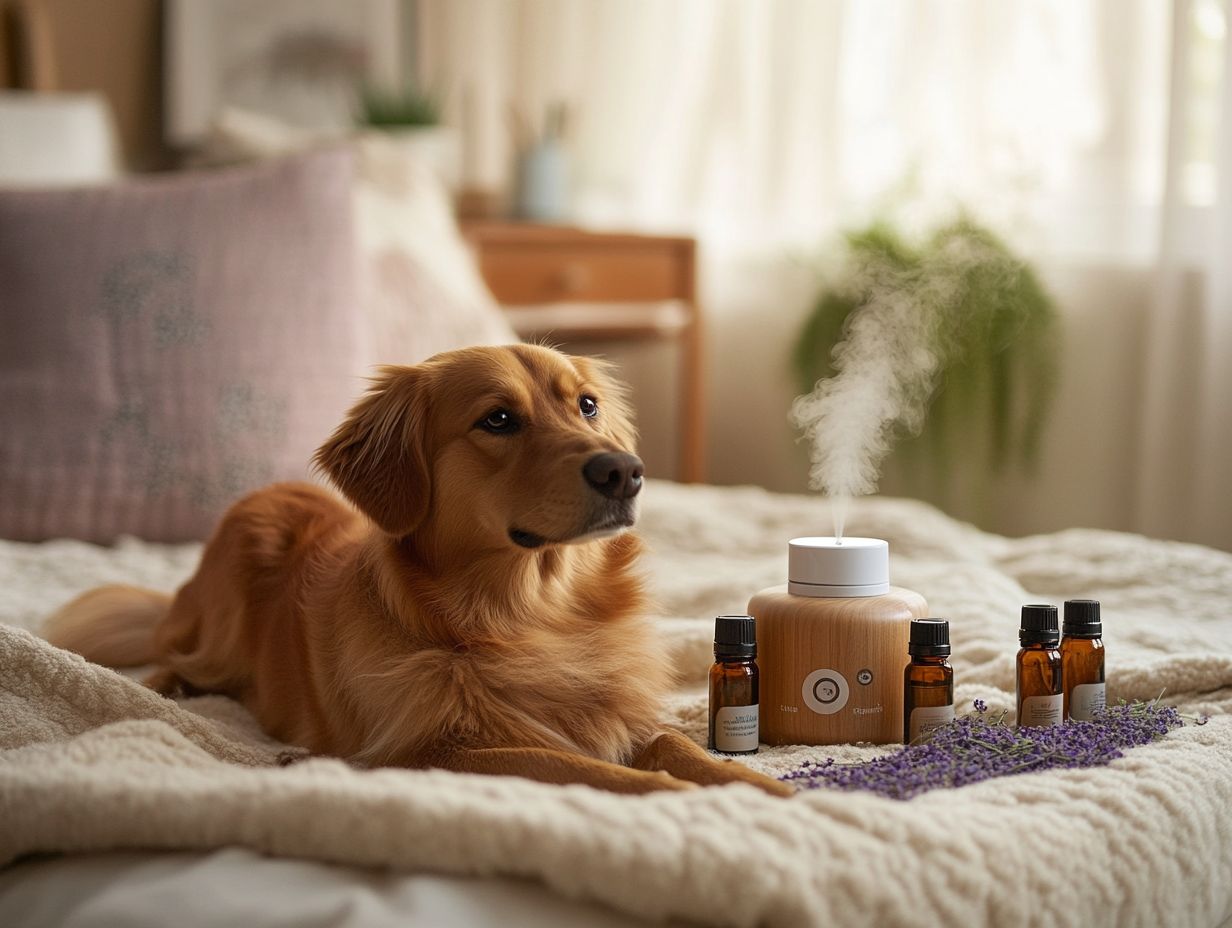
Finding safe oils for your dog’s anxiety is crucial for their wellbeing. Oils like lavender, cedarwood, and chamomile are soothing and can be used in massage therapy for a calming effect.
Oils such as bergamot and ylang-ylang enhance relaxation. Try diffusing them in your dog’s space or applying diluted oils to their collar or bedding.
Always dilute essential oils properly generally, one drop of oil to one tablespoon of carrier oil. Watch for any adverse reactions and consult a veterinarian before starting a new regimen.
Methods of Using Essential Oils for Anxious Pets
There are several effective ways to use essential oils for anxious pets, including using aromatherapy to calm anxious pets, inhalation, topical application, and diffusion.
This is a game changer during high-stress occasions like the 4th of July or New Year s Eve, when the sound of fireworks can heighten anxiety levels.
Inhalation, Topical Application, and Diffusion
Inhalation, topical application, and diffusion are three primary methods for delivering essential oils to your pets, each offering unique advantages. Using diffusers to spread calming aromas can transform your space into a serene haven.
Topical application allows for direct absorption of the oils, enhancing their therapeutic effects. Pairing these methods with calming music can create a multi-sensory retreat for your furry companions.
For inhalation, consider the benefits of relaxing lavender or chamomile oils. Simply placing a few drops on a cotton ball near your pet s favorite resting spot can work wonders.
For topical application, ensure safe absorption by blending essential oils with a carrier oil, like coconut or jojoba. Don t hesitate to experiment with unique aromatherapy recipes by combining peppermint and eucalyptus in a diffuser.
Using rose and Frankincense can provide refreshing relief during stressful moments, promoting an overall sense of tranquility and well-being for your pets.
Precautions and Safety Measures
Taking the necessary precautions is vital for your pets’ health and well-being. Properly diluting essential oils with carrier oils, such as coconut or olive oil, significantly minimizes the risk of adverse reactions.
This is especially important for sensitive dogs, who may be more prone to allergic reactions or toxic sensitivities.
Prioritizing these steps ensures that your furry companions can enjoy the benefits of essential oils safely and effectively.
Proper Dilution and Avoiding Toxic Oils
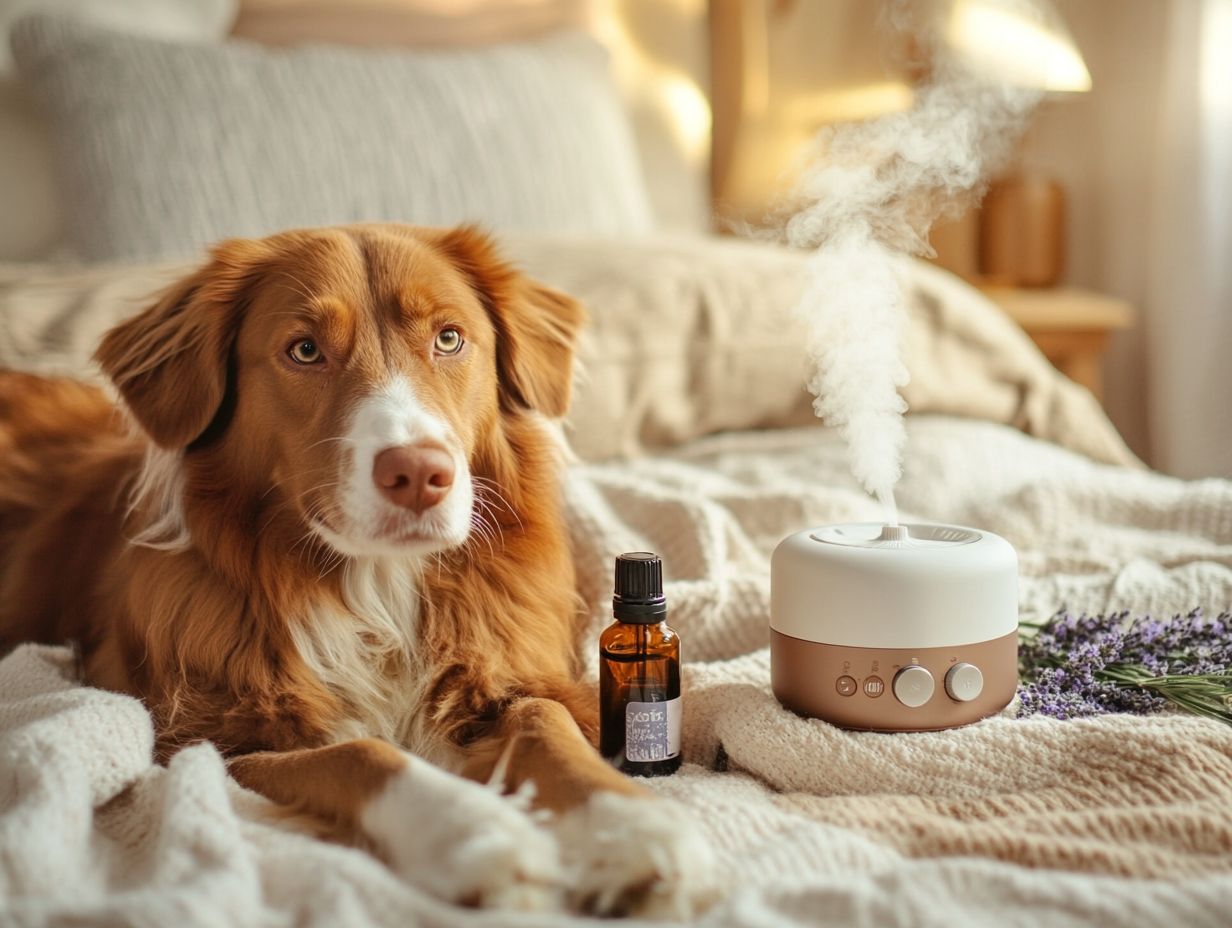
Proper dilution of essential oils is crucial for the safe use on pets. It helps mitigate any potential risks associated with toxic oils that could harm their health. By utilizing carrier oils, which are base oils for mixing, you can ensure essential oils interact safely with your pet s skin. This enhances the calming effects without causing irritation.
It’s vital to test for any allergic sensitivities before introducing new essential oils into their environment. Certain oils, such as tea tree and eucalyptus, are known to be particularly toxic for pets and should be completely avoided.
A typical mixing guide is 1-2 drops of essential oil per tablespoon of carrier oil. Consider pet-safe combinations like lavender and coconut oil. These can promote relaxation and overall well-being.
Always remember that starting with a lower concentration allows you to monitor your pet s reactions. This ensures their safety and comfort every step of the way, especially when introducing new scents or oils.
Tips for Introducing Essential Oils to Your Pet
When introducing essential oils to your pet, proceed with care. Use a gradual introduction strategy to avoid overwhelming them, especially with strong scents like lavender or bergamot.
By closely observing your dog’s reactions during this process, you can identify which calming blends work best for alleviating anxiety and promoting their comfort.
Additional Techniques for Calming Anxious Pets
Beyond essential oils, various techniques can soothe anxious pets. These methods foster relaxation and a sense of grounding. To enhance your efforts, consider exploring natural remedies for pet anxiety, which can be especially powerful when paired with calming oils, allowing you to create a comprehensive approach to pet care.
Combining Essential Oils with Other Relaxation Techniques
Combining essential oils with other relaxation techniques can elevate their soothing effects. Techniques like massage are beneficial, allowing the oils to penetrate deeper while providing a nurturing experience for your dog.
Enhancing this relaxing environment with calming music is an excellent idea! Gentle melodies foster a serene atmosphere. Imagine playing soft, harmonious tunes while giving a gentle massage infused with lavender oil. Not only does it soothe your furry friend, but it also helps reduce stress hormones in their body.
This delightful combination creates a sense of security, promoting tranquility and happiness.
By integrating these methods, you can develop a multifaceted approach to anxiety relief. This significantly enhances your pet’s overall well-being and helps your beloved companion enjoy a more peaceful life.
Frequently Asked Questions
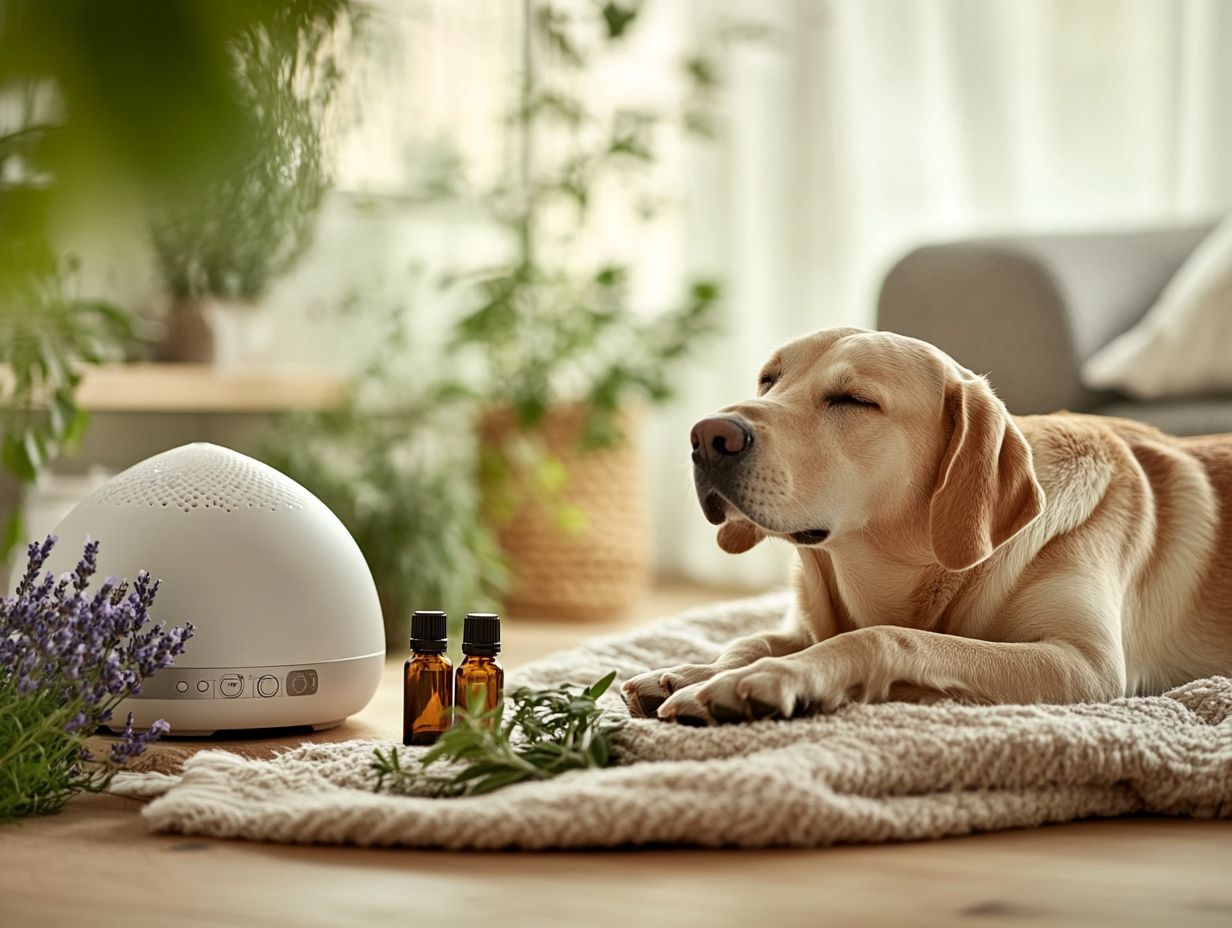
How can I use essential oils for my anxious pet, including calming blends like lavender and cedarwood?
Essential oils can be used for pets in various ways, including diffusing, topical application, and oral ingestion. Research the specific oil and how it can be safely used for your pet.
Are there any essential oils, like Ylang Ylang and tea tree, that are harmful to pets?
Yes, some oils can be toxic to pets, especially cats. Oils to avoid include tea tree, wintergreen, and pine. Always consult with a veterinarian before using essential oils on your pet.
How do I know which essential oils to use for my pet’s anxiety, like calming effects from lavender and chamomile?
Many essential oils have calming and soothing properties. Popular ones for pets include lavender, chamomile, and valerian. To help your pet feel more at ease before training, consider exploring techniques to calm anxious pets. Consult with a veterinarian and do your own research before using any essential oil on your pet.
Can I use essential oils on all types of pets?
Not all pets respond well to essential oils. Some may have allergies or sensitivities, so always start with a small test to see how they react.
Use very diluted amounts of oils. Some oils might benefit specific pets, like cats or dogs.
How often should I use essential oils on my anxious pet?
This depends on how your pet reacts and the oil used. Start slowly and watch their behavior closely.
Some oils can be used daily, while others should only be applied as needed.
Can essential oils replace medication for my pet’s anxiety?
Essential oils can help with your pet’s anxiety, but they shouldn’t replace prescribed medication. For additional strategies, consider learning how to use textures to calm anxious pets, and always check with your veterinarian for the best approach.

